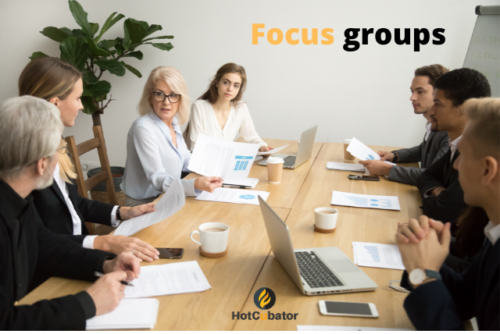

When it comes to gathering qualitative data on a reasonably broad and explorative topic which aims to assert the viewpoints from multiple parties, a popular method is known as focus group interview or focus group discussion. Focus group as a data gathering technique has been widely adopted due to its strength to attain information from a diverse group of audience. Focus group interviews have distinct advantage over the other data collection tools due to being flexible, and the opportunity to communicate with more than one participant at the same time. Designing the focus group however, is far from easy and requires specific skills. If not properly designed, focus group interview will not be able to accomplish the objectives for which it is designed. The researcher who usually plays the role of a moderator needs to have a solid understanding of a range of different factors. This article touches on the various factors that need careful consideration before planning a focus group interview –
Focus groups usually last for about 1 to 2 hours. The moderator can provide a short break in between depending on the situation. It is a good practice not to stretch the discussion for too long if the participants do not feel comfortable sitting after a certain time. Also, if the moderator observes that the discussion is reaching to a point where there is very limited consensus or even an awkward argument, it is better to reduce the length of such discussion.
There is no explicit guideline on this one. The number of the questions may vary depending on the time commitment of the participants, nature of the study and myriad of the other factors. A rule of thumb in this case is to have anything between 1 to 5 questions.
Open-ended questions are always recommended for most types of qualitative data gathering method. The benefit is that the participants can unpack more information if they are allowed to express their views more openly. But the open-ended questions should still be clear, simple, and direct which will help to avoid confusing terminology or long questions.
Sampling the participants for focus group is one of the most challenging aspects. Selecting the right cohort is a critical element in the success of focus group. So care must be given while recruiting the participants and ensuring the right composition of the group. A general recommendation is that the members of the focus group should have attributes which are homogenous. But there should also remain some degree of variation so that contrasting opinions can be derived. Common factors where homogeneity is sought are – occupation, educational level, age, gender, education, or family characteristics.
Typically, the size of the focus group is from 6 to 12 participants. The group should not be so large that each participant does not have a chance to contribute. Nor should the group be so small that it limits the range of experiences and opinions to be shared. Again, the size of the focus group is largely determined by the research topic.
The researcher can adopt both automatic (tape recorder, video) and manual data recording techniques in focus group interviews. Depending on the research topic, availability of technical support, research budget this could be determined. It is however, important to have this clearly communicated to the participants so that they are aware of this information. Some participants may have reservation on their discussion being recorded. So there should be a pre-defined confidentiality statement.
The environment of the focus group interview can play a big role. The nature of the sitting arrangement, size of the table, proximity from each other, lighting condition – everything plays a part on how effective the focus group discussion will be. While it is hard to put specific parameters around each of these factors – but it is always the researcher who can assess these factors in optimise them to elicit the best possible result from the focus group discussion.

There are various types of focus groups . The type of focus group to chose depends entirely on the research topic and the skill set of the researcher.
This type of focus group involves using two groups where one group actively discusses a topic, whereas the other observes the first group. Usually, this type of focus group is conducted behind a one‐way glass.
Involves two moderators working together, each performing a different role within the same focus group. The division of roles ensures a smooth progression of the session and ensures that all topics are covered.
Involves two moderators who purposefully take opposing sides on an issue or topic under investigation. It is expected that the introduction of contrary views to the discussion by the moderators could be critical to achieving more in‐depth disclosure on the research topic.
This method involves selecting one or more of the participants in the focus group who takes the lead as moderator. This is done to change the dynamics of the group and generate more varied responses.
A focus group that consists of fewer participants – usually four or five. A mini focus group creates a more intimate group.
Participants respond and share information through online means. Online focus groups are done to reach a broader range of participants.
Krueger, R.A. (1994). Focus groups: A practical guide for applied research. Newbury Park, CA: Sage.
Nyumba, T., Wilson, K., Derrick, C. J., & Mukherjee, N. (2018). The use of focus group discussion methodology: Insights from two decades of application in conservation. Methods in Ecology and evolution, 9(1), 20-32.
Stewart, D. W., & Shamdasani, P.N. (1990). Focus groups: Theory & practice. Newbury Park, CA: Sage.